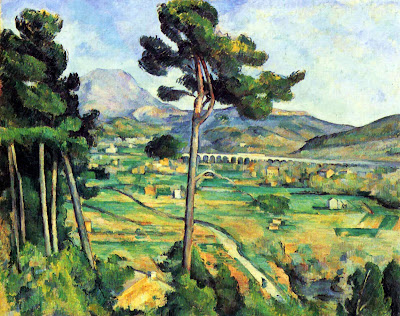NEOIMPRESSIONISM
"Modernity is the transient, the fleeting, the contingent; it is one half of art, the other being the eternal and the immovable." wrote Baudelaire. The paintings of Seurat offered the modern practical synthesis between the "fleeting" and the "eternal", between the contingent forms of modern experience and its artistic expression as a prospective and enduring vision across time, that is, as a kind of "transhistorical" expression of historical experience.
For Seurat the function of the work of art is to preserve as artistic form the memory of the actual, of living time, at the same time that it provides the seed of future artistic developments. In the works of Seurat the basic elements of the temporal flux of perception that the analysis of visual experience by the impressionists revealed are systematized into a method of color analysis and of synthetic formal expression. In his paintings the elementary particles of color and their exchanges provide the energy for the construction of large linear rhythms and imposing stable forms. The result is the monumental representation of modernity. Of which the heroic and the prospective is one half, the other being a type of reification of time and of historical experience and structures.
Seurat's Neoimpressionism reflected important aspects of the scientific and progressive ideologies of his period. Charles Blanc (1813-1882) in the Grammar of the Graphic Arts (1867) had summarized, and therefore popularized among the artists of the time, Chevreul's researches on color.
Marcelo Guimarães Lima
GEORGES SEURAT
Georges Seurat (1859 – 1891)
A Sunday Afternoon on the Island of
La Grande Jatte
1884–1886
Oil on canvas
207.6 cm × 308 cm
Art Institute of Chicago, Chicago
Georges Seurat (1859 – 1891)
Bathers at Asnières, 1884,
National Gallery, London
National Gallery, London
Georges Seurat (1859 – 1891)
Circus Sideshow (or Parade de Cirque), 1887–88,
Metropolitan Museum of Art,
New York City
detail of Parade (above)
PAUL SIGNAC
Paul Signac (1863 – 1935)
Breakfast, 1886-1887,
Kröller-Müller Museum, Otterlo,
The Netherlands
Paul Signac
Portrait of Félix Fénéon, 1890
Oil on canvas
73.5 cm × 92.5 cm
Museum of Modern Art, New York
Paul Signac (1863–1935)
View of the Port of Marseilles, 1905
Oil on canvas
Metropolitan Museum of Art, New York City









Comments